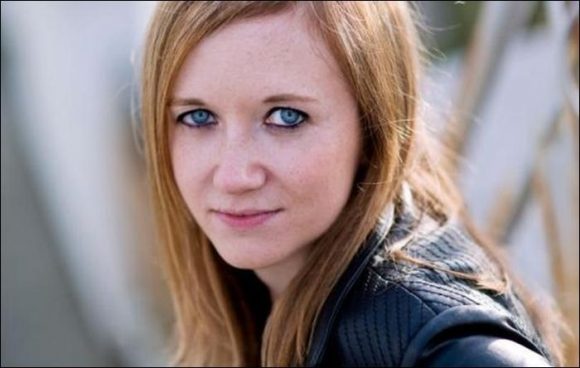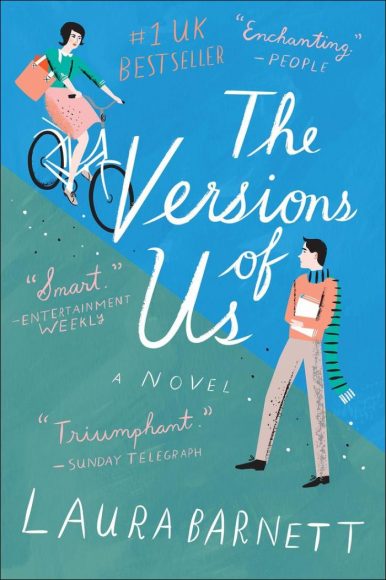Finding out the extraordinary in ordinary life. From Socrates to Shakespeare to Henry James, many a great mind has maintained that the unexamined life is not worth living. In 1916, the year James died, another great American writer took the notion a step further. With the publication of his third collection of poetry, Mountain Interval, Robert Frost gave the world what is his perhaps his most famous poem, The Road Not Taken, a meditation on the diverging paths of life and the poet’s longing to travel both routes out of the yellow wood.
Roads not taken and lives unlived can make for great fiction. The human tendency to think what if, to consider the greener grass, is satisfied as an author manipulates her characters through time and space. This is what the English author Laura Barnett does in her debut novel, The Versions of Us, a captivating whirlwind of a book that offers readers three variations on one couple’s life.
Beginning in 1938 and spanning nine decades, the parallel stories centre on the fortunes of two Cambridge students, Jim and Eva, whose paths cross at the Backs – the gardens of the university’s riverside colleges – when Eva falls off her bike. From there the book splits into three tales, with the couple brought together and pulled apart at different stages of their lives.
Version one sees Eva leave her self-centred actor boyfriend, David, for Jim. The newlyweds, head over heels, begin their life together in a ramshackle cottage in south London. Both are looking to create something “of value”, Eva in her writing and Jim through his painting, a talent he has inherited from his famous father.
In version two the couple part ways after their chance meeting. Jim continues with his law studies, hemmed into a career he doesn’t want by his manic-depressive mother. Eva, meanwhile, is wowed by David’s good looks and charisma, yet days after she accepts his marriage proposal she questions her decision: “I’ve been thinking about Plato’s cave, about that terrible idea that most of us spend our lives with our backs to the light, watching shadows on the wall.”
The third version borrows heavily on the romance genre: an unwanted pregnancy, a letter that leaves much to wonder about and resent, the budding relationship between Eva and Jim cut short by circumstance.
Natural flow
A line from Anne Tyler’s The Amateur Marriage works as an epigraph to reflect central themes: “Sometimes he fantasised that at the end of his life, he would be shown a home movie of all the roads he had not taken, and where they would have led.”
There is something of the masterful American writer in Barnett’s style, in her domestic settings and her eye for the extraordinary in ordinary life. Other notable comparisons are with British author Kate Atkinson, particularly the omniscient and time-bending narrative of Life After Life; David Nicholls’s One Day; and Emily Woof’s engaging debut novel of star-crossed lovers, The Lightning Tree, published earlier this year.
In Versions Barnett trips across a variety of settings – Cambridge, London, Bristol, New York, Cornwall, Los Angeles – that each come to life. In LA David’s glittering acting world has “Faye Dunaway, gazelle-limbed in white bellbottoms”. A holiday to Athens for Jim and Eva shows the landscape from Jim’s painterly perspective: “The deep blue expanse of sea; the bleached yellows of the retreating land; the cerulean splash of sky.”
Barnett, who is also an arts journalist, displays control, intelligence and a refreshing unsentimentally about her characters and their pursuits. She flits through alternate worlds, challenging the reader to keep track of the different outcomes. Fast-paced and full of gossipy action – affairs, communes, suicide, drugs, birthday bashes – the book also entertains with its spirited side characters whose lives are equally affected by time and circumstance.
Even as the characters age, and their possibilities with them, Barnett sustains momentum through thought-provoking themes. Wider concerns surround the personal plights of Eva and Jim: the legacy of the Holocaust, artistic struggles, mental illness, the tough worlds of theatre and journalism, the burden of being a carer.
Each version has its allures and pitfalls; each road, whether taken or not, has ups and downs. The point, which hits home through the author’s thorough excavation of her characters’ lives, is that there is no escaping “the humdrum rhythms of the everyday”. These are the stuff that lives are made of.
Visits: 65




